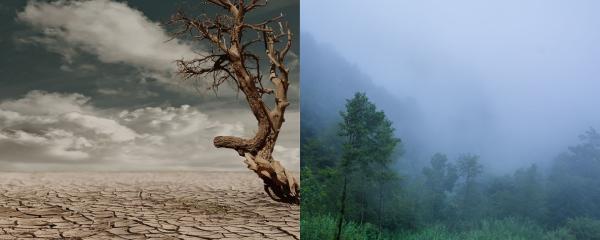
IIT Palakkad study shows how different indices used to predict drought combined with effects fof climate change can lead to different climate predictions for the future

IIT Palakkad study shows how different indices used to predict drought combined with effects fof climate change can lead to different climate predictions for the future
Are you a fan of detective TV shows? If so, you will know of DNA Fingerprinting as a tool to identify a criminal.
Everyone’s DNA, much like a fingerprint, is unique. Repeating sequences of DNA called tandem repeats are present between genes. The number each repeat sequence varies from person to person. We can generate a unique pattern of tandem repeats for every person using specialized laboratory techniques. Identical twins are an exception to this case since they have the same DNA fingerprint.
Erik Solenheim, Executive Director of the United Nations Environment Programme visited Center for Ecological Sciences at Indian Institute of Science (IISc), Bengaluru to deliver a talk about the interface of science and policy.
In his talk titled ‘Science Policy Interface: Insights and ideas for a changing world’ Mr. Solenheim spoke about the three main environmental challenges of we face today namely; climate change, pollution and loss of biodiversity.
Dr. Harsh Vardhan, Hon’ble Union Minister of Science and Technology, Environment, Forest and Climate Change and Earth Sciences visited Indian Institute of Science (IISc), Bengaluru to inaugurate the supercritical carbon dioxide Brayton cycle test loop facility. He was welcomed by Prof. Anurag Kumar, Director IISc, Prof. G Rangarajan, Divisional Chairman, Interdisciplinary Research, Prof. Pradip Dutta, Chairperson, Interdisciplinary Centre for Energy Research, and V. Rajarajan, Registrar, IISc.
Termites are known to be efficient farmers who farm a kind of fungus in their colonies to digest the wood that they feed. Scientists from the Indian institute of Science, Bangalore and École Nationale Supérieure de Chimie de Montpellier, Montpellier, France, explore whether the termites prefer a certain species of fungus and if they can identify weed fungi and remove them.
Professor Ashutosh Sharma, Secretary, Department of Science and Technology and Department of Biotechnology, India and Professor Stephen Toope, Vice-Chancellor, University of Cambridge, along with other researchers from the University of Cambridge and from various Indian research institutions met today in New Delhi to formalise the launch of TIGR2ESS – an acronym for “Transforming India’s Green Revolution by Research and Empowerment for Sustainable food Supplies”.
For the first time ever scientists discover the skeleton of the ancient marine reptile, Ichthyosaur, in the Kachchh basin of Gujarat.
Researchers from Indian Institute of Technology Indore, Indore have developed shape controlled cobalt ferrite nanoparticles, which can be used to accurately measure the humidity of a region.
Graphene is called the ‘wonder material’ due to its electrical and mechanical properties and is now evolving as an alternative to conventional energy storage devices like batteries and supercapacitors. Researchers from Institute of Nano Science and Technology (INST), Mohali, use peanut shells to manufacture high-quality graphene nanosheets.
Dr. Harsh Vardhan, Hon’ble Union Minister for Science and Technology, Environment, Forest and Climate Change and Earth Sciences, Govt. of India visited the Centre for Research and Education in Science and Technology (CREST), Indian Institute of Astrophysics (IIA) at Hosakote. He was welcomed by Prof. P Sreekumar, Director of IIA and Prof. G C Anupama, Dean and Professor-in-charge of CREST and others at CREST.
Whales are magnificent creatures. Not only are they the some of the largest mammals on the planet, they also have the longest mammal migrations. Why and how do whales migrate? And what are some of the challenges they face on the way?